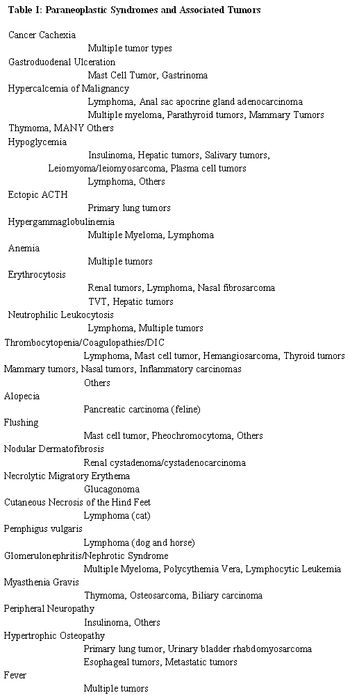
How your colleagues respond to terms such as presumptive, consistent with, probable, supportive of, and more.

How your colleagues respond to terms such as presumptive, consistent with, probable, supportive of, and more.

Treatment of feline intestinal lymphoma requires instituting systemic chemotherapy, with or without surgical resection of focal intestinal lesions.

In this online on-demand course, Dr. Pam Jones discusses hemangiosarcoma - including staging tests and treatment options for various forms of hemangiosarcoma. (1 CE credit)

Dr. Chick Weisse discusses using interventional radiology to administer chemotherapeutic drugs and other oncology treatments.

What are the benefits of low-dose continuous chemotherapy?

Champaign, Ill. -- A new drug designed to treat lymphoma targets a specific cellular enzyme and has shown positive effects in four dogs.

What is a good prognostic factor in cats with form of cancer?

What are some signs of a malignant bone lesion?

Dr. Kimberly Selting discusses the many benefits of clinical trials.

Paraneoplastic syndromes (PNS) are neoplasm-associated alterations in bodily structure and/or function that occur distant to the tumor. They are an extremely diverse group of clinical aberrations that are associated with the non-invasive actions of the tumor.

Paraneoplastic syndromes (PNS) are neoplasm-associated alterations in bodily structure and/or function that occur distant to the tumor. They are an extremely diverse group of clinical aberrations that are associated with the non-invasive actions of the tumor.

Mammary gland tumors (MGT) are some of the most common tumors seen in veterinary clinical practice. They are the most common tumor seen in the female dog and the second most common tumor of the female cat.

Osteosarcoma (OSA) is the most common primary bone tumor in the dog (85% of skeletal malignancies). It is estimated to occur in over 8,000 dogs/year in the United States.

Head and neck tumors are relatively common in cats. An understanding of the differentials in this anatomic location is very important as the diagnostic and therapeutic approach may vary.

Lymphoma (LSA) is the most common tumor of the cat and represents approximately 80-90% of hematopoietic tumors in cats. LSA is the third most common tumor in the dog with an estimated annual incidence of 13-24/100,000 dogs at risk.

Mast cell tumors (MCT's) are the most common tumor in the dog and the second most common tumor in the cat. MCT's are primarily a disease of older dogs and cats, however, extremely young dogs and cats have been reported to have MCT's.

Vaccination has generally been considered to be a benign procedure in veterinary medicine. Unfortunately, soft tissue sarcoma development subsequent to vaccination (vaccine-associated sarcoma; VAS) in cats has dramatically changed this view within our profession over the last twenty years.

Canine malignant melanoma (CMM) of the oral cavity, nail bed, foot pad and mucocutaneous junction is a spontaneously occurring, highly aggressive and frequently metastatic neoplasm. CMM is a relatively common diagnosis representing ~ 4% of all canine tumors and it is the most common oral tumor in the dog.

The recognition of the development of potentially malignant tumors arising from injection sites became one of the most significant events in veterinary medicine in the 1980's and beyond. So significant, in fact, that it caused an entire profession to re-evaluate the way preventative medicine should be considered from a medical and an economic perspective.

In this online on-demand course, Dr. Pam Jones will discuss thoracic cavity cancers, including emergency case management and treatment options for chest cavity tumors including chemotherapy and surgery. (1 CE credit)

This online on-demand course discusses chemotherapy administration and the potential complications associated with its administration. (1 CE credit)

This online on-demand course emphasizes the importance of immunohistochemistry and understanding the different histologic subtypes of lymphoma. (1 CE credit)

Denver/Overland Park, Kan. -- A three-year, $1 million project seeking to prevent, treat and cure cancer in dogs.

Phoenix, Ariz. -- The Translational Genomics Research Institute (TGEN) and the Van Andel Research Institute (VAI) have created a new Canine Hereditary Cancer Consortium, which aims to study naturally occurring cancers in dogs to better understand how the disease develops in both animals and humans.

West Lafayette, Ind. - Old dogs may be able to teach veterinary researchers new tricks about cancer and aging.